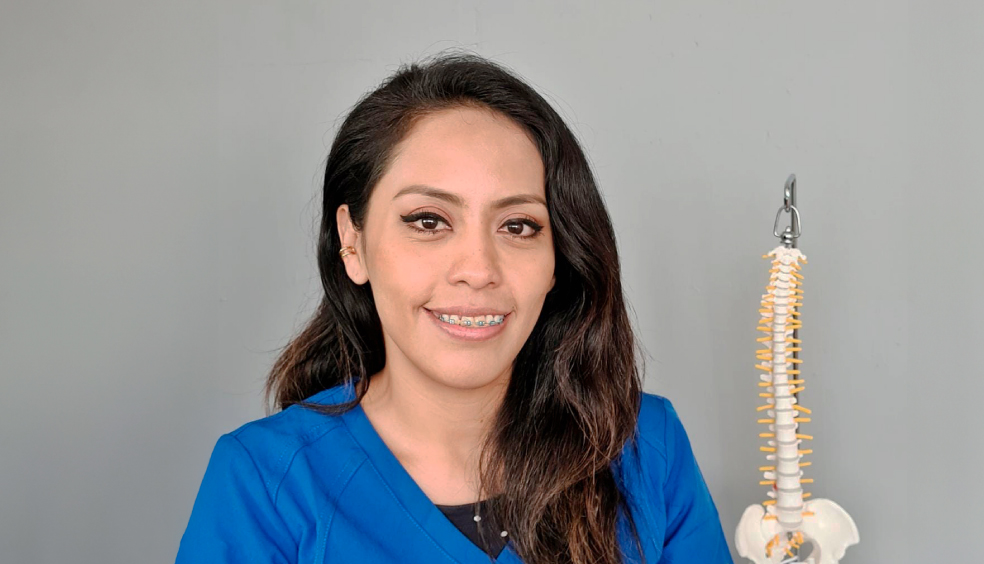Physiotherapy for pregnant women improves lumbopelvic mobility, activates the transverse abdomen and pelvic floor, reducing circulatory problems and edema, and alleviating discomfort caused by postural changes during pregnancy.
Pregnancy physical therapy is a specialty that aims to maintain optimal body structure health during pregnancy, through prevention and rehabilitation. It relieves pain and discomfort caused by the different changes your body undergoes, improves lumbopelvic mobility and activates the transverse abdomen and pelvic floor.
It is recommended to start physical therapy in pregnant women from the 17th week of gestation, as long as the treating physician approves it.
It serves to reduce pain, improve circulation, prevent edema and maintain good posture, which contributes to a more comfortable and healthy pregnancy.
Obstetric physical therapy eliminates contractures and tensions, helping to relieve pain. It improves mobility, activates the abdominal and pelvic floor muscles, and reduces the incidence of circulatory problems and edema. In addition, through the technique of perineal self-massage, the pregnant woman will learn how to reduce the possibility of tears during natural childbirth.
No special preparation is required, but it is important to have the authorization of the treating physician.
An assessment is carried out to obtain important data, followed by a series of personalized exercises, manual therapy techniques and advice on postural hygiene.
An obstetric physical therapy session lasts between 60 minutes and 1 hour and 20 minutes.
No, but if some symptoms do occur, precautions should be taken.

Physiotherapist graduated from the Universidad del Valle de Mexico with a specialty in obstetrics. Currently, she continues to expand her knowledge on the GDS muscle chain method, obstetric physiotherapy and improvement of physiotherapy techniques.
Certified in kinesio taping, manual therapy and hypopressive exercises.
It is performed between the 11th and 14th week, and with it, we can know how many weeks of pregnancy you have and if there is a risk of Down Syndrome.
It is a blood test that detects two placental hormones; it improves the detection of Down Syndrome, Preeclampsia, and growth restriction.
During the second trimester, we carefully evaluate your baby's organs.
It provides information about the baby's growth, position, and the state of the placenta and amniotic fluid.
Our equipment offers images of greater clarity and resolution, which allows you to get to know your baby on a deeper level.
Allows for the evaluation of the baby's heart development and function, identifying possible heart anomalies and ensuring appropriate monitoring during pregnancy.
It consists of extracting amniotic fluid by means of an ultrasound-guided needle. It is performed after 15 weeks for the prenatal diagnosis of genetic disorders.
It is a procedure in which a small placenta sample is obtained under ultrasound control. It is performed between 10 and 14 weeks to diagnose genetic diseases.
It is a test that evaluates the behavior of your baby's heart and helps us determine if its oxygen supply is adequate.
It allows you to rule out chromosomal alterations in your baby, such as Down syndrome, using a blood sample from the mother.
Helps to relieve pain and discomfort caused by postural changes during pregnancy, improving lumbopelvic mobility, decreasing circulatory problems and maintaining pelvic floor muscle tone.
Improves musculoskeletal structures after pregnancy, provides lymphatic drainage and treatment for soft tissues and scars, facilitating a healthy and safe recovery.
Personalized nutrition plan to enhance chances of successful pregnancy. Custom strategies for couples diagnosed with infertility. Includes comprehensive assessment, tailored recommendations, and ongoing support.
Stage-specific nutritional strategies throughout pregnancy, with progress monitoring and customized recommendations based on each patient's individual needs.
Professional guidance for successful breastfeeding. Includes nursing techniques, solutions for common challenges, and nutritional recommendations during the lactation period.

Lomas Altas Branch: Av. Paseo de la Reforma 2654, Quadrata Tower, 14th Floor, Office 1401, Lomas Altas, Miguel Hidalgo, CP 11950, Mexico City.
Mixcoac Branch: Manacar Shopping Center, Av. Insurgentes Centro 1457, Basement 1, Onna Unit, Mixcoac, Benito Juárez, CP 03920, Mexico City.